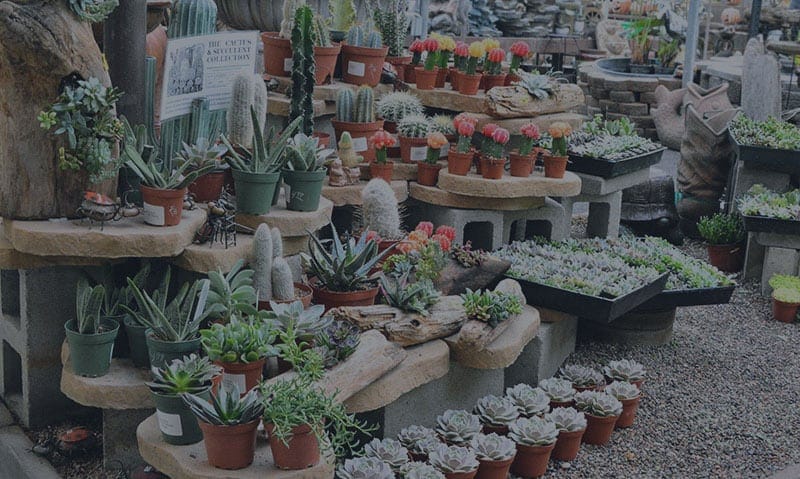Newsletter Articles
How to Keep Your Indoor Potted Plants Bug Free
Written by Kelsey W.
Insects are a necessary part of the world’s ecology, but it’s never fun to see bugs sitting on your indoor potted plants. Not only can these bugs negatively impact the health of your plants, but they can also annoy you and your family in your home if they become too numerous.
However, keeping your home’s indoor plants free of pests doesn’t necessarily require the indoor equivalent of crop dusting your plants with all sorts of hazardous materials designed to kill bugs. There are some far less invasive options out there that are just as effective.
Let’s learn about why your house plants might attract bugs, what to do if you see bugs, and how to create a defensive barrier against new infestations.
What’s the Best Way to Keep Bugs Out of Your Indoor Plants?
Unless you live in a hermetically sealed home, there’s no guarantee that your home will remain bug-free, especially if you bring some plants inside your home where bugs would also like to make a home. However, bug infestations aren’t a foregone conclusion when you have indoor plants.
In fact, one of the best defenses you have against keeping bugs from infesting your plants is keeping an eye on them. There is literally no better way to ensure you catch an infestation early than inspecting your plants as often as possible, even if that means getting on a chair to look at the leaves of your pothos winding its way across a bookcase.
If you have the time, taking a look at your plants on a daily basis is the best way to keep bugs away. However, looking at your plants every time you water them is usually sufficient. It’s rare that an infestation can take over a plant completely from one watering to the next.
Don’t forget to look at the undersides of the leaves. If you miss seeing a bug on a plant, the likely reason is that you’re not looking on the undersides of the leaves. Turn a bright light on your plants and look at every available surface, and you should enjoy a high rate of success in catching buggy invaders.
Healthy Plants Aren’t Vulnerable to Infestations
One of the biggest factors in the war against infestations is the size of the infestation when you catch it. It’s easy to pull a few bugs off a plant and keep an eye on it to make sure no other bugs appear, but it’s something else entirely to get rid of a significant infestation after it’s taken over.
A healthy plant is much less susceptible to infestations, but even if some bugs start to make their homes inside one of your plants, they won’t have as easy a time breeding and growing a colony if your plant is happy and healthy.
Making sure your plants enjoy a well-ventilated home and well-draining soil that helps prevent maladies like root rot and fungal growth will ensure your plants remain strong and healthy, and able to repel invaders. At the very least, those healthy plants won’t fall victim to infestation very quickly.
A Clean Home Means Fewer Pests
A clean home usually features smaller bug populations, and you’ll tend to see fewer insects coming into your house to feed on your plants when the environment around your plants is clean. A clean environment means having adequate airflow and no areas near your plants left damp and unnecessarily moist.
Keeping your plants clean is also important, and this entails clipping off dead leaves, keeping the plants strong, and making sure they’re not vulnerable to insect populations. A plant with strong leaves and stems isn’t as easy for insects to chew upon and eat, so they’re less likely to invade or try and set up homes when the plant presents a tough and strong exterior.
If you have just one plant that’s not doing very well, you may want to separate it from the rest of your plants, just in case an insect decides to come around and target it. You can take special care and time to work with your vulnerable plant until it’s stronger and able to move back to a grouping with the other plants.
Know the Pests That May Infest Your Plants
You may find it helpful to know exactly what to look for as far as bug infestations go in your plants. When you know what bugs look like, you can keep an idea of what those bugs look like in your mind, so they’ll be immediately obvious when you see them on a plant.
For example, one of the most common bugs you might find trying to make a home in your snake plant is an aphid. Once you know how to identify an aphid, you can look for these bugs on your snake plants and act swiftly to remove them when you find them on your plant.
Meanwhile, if you have African violets on your windowsill, you’ll need to keep an eye out for mealybugs, which can infest the plant at such a rate that your only recourse against the bugs might be to use a pest-killing spray.
It’s okay to feel wary about using pesticides and herbicides on your plants to kill bugs. You have many options for dealing with infestations and can start with mild and plant-based sprays like diatomaceous earth, insecticidal soap, and essential oils.
Neem oil is an effective insect deterrent, but be aware that it can have some negative impacts on the local bee populations. As long as you’re using it on your indoor plants and avoiding spraying it on outdoor blooms, you shouldn’t find yourself running into any problems with local bees.
Clean Your Plants with Mild Soap and Water
If you don’t completely trust your eyes to do the job and worry about bugs getting into your plants despite daily inspections, you can also clean your plants regularly, which can help reduce the likelihood of an infestation growing without your knowledge.
All you need to do is put a few drops of some mild liquid soap in a spray bottle and fill it with water. A quick application of the spray and then a wipe-down of the leaves with a thin towel should help keep your plants clear of bugs.
Try using a light-colored cloth so that you can inspect it after you wash the plants. If you’re able to remove any bugs, you might see them on the cloth when you’re done cleaning. If you’re worried about whiteflies in your plants, a dark colored cloth will help those bugs stand out when they’re removed.
What Do You Do Once Your Plant is Infested?
If you find any bugs on your plants, the very first thing you should do is quarantine that plant from all the others in your home. Moving the plant some distance away from your other plants is the easiest way to prevent the bugs from jumping to another plant.
Having one plant in your house that’s infested with bugs doesn’t necessarily mean that all your other plants are also infested. Catching the bugs early and taking care of the problem before it overwhelms the plant may allow you to avoid having to treat every one of your plants for bugs.
If you find that your efforts to conquer an infestation aren’t getting anywhere, and your plant isn’t faring well, you can consider removing the plant from your home. Unless the plant has some sentimental value to you and you’re absolutely keen on keeping it around and fighting until the very last leaf is attached, you can consider parting ways with the plant if the fight against the bugs is too overwhelming.
You can also try separating a part of the plant away from the main plant for the purposes of propagating a bug-free section and growing a new plant. Some infestations do make this approach pretty difficult, but it’s something to consider if you have a part of the plant that’s not yet infested, and you’re reasonably sure you can make a cutting and create a new plant.
Fill Your Home with Beautiful Plants from Green Thumb Nursery
Green Thumb Nursery has all the plants and expertise you need to create a beautiful garden that thrives all year long. We’ll give you the tools and the knowledge to keep your plants healthy and ensure you get the most out of your gardening experience. Drop by one of our Southern California locations today to talk about our favorite subject: plants.
Do you like what you see? Sign up for our weekly newsletter to get content like this every week!
CLICK HERE TO SIGN UP!


